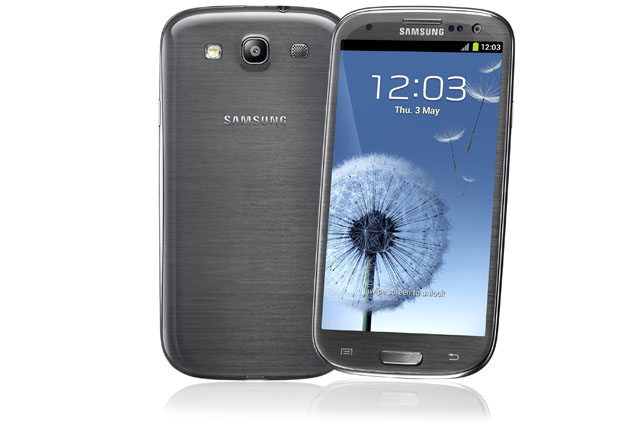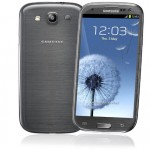review Featuring the addition of 4G support and the latest ‘Jelly Bean’ version of Google’s Android platform, the 4G version of Samsung’s popular Galaxy S III handset appears to represents a significant upgrade to a handset which was already one of the best 2012 has to offer. But how does it perform in practice? Read on to find out.
This review will be an unusual one for Delimiter. Normally we focus on three key areas in our reviews: Design, Features and Performance, before giving an overall conclusion and purchase recommendation for products. However, we’ve already reviewed the 3G version of the Samsung Galaxy S III handset comprehensively. Because of this, we recommend that before you read our review of that model first to get a solid overview of the Galaxy S III in general, before returning back here for an in-depth look at the key additional features added in the 4G version, and how they perform.
4G support
The headline new feature in the 4G version of Samsung’s Galaxy S III handset is just that – support for 4G speeds. The 3G version of the smartphone was no slouch when it came to the network speeds it was capable of – even at that stage, we had no problems accessing any Internet service via the 3G mobile networks of carriers such as Telstra and Optus that we wanted to, including streaming video from sites such as YouTube and GomTV. But the 4G version of the Galaxy S III kicks it up a notch.
We tested the 4G Galaxy S III on Optus’ 4G network around the inner suburbs of Sydney, and found that the handset had no problem supporting the test Optus can offer. We occasionally saw speeds spiking to above 30Mbps, but the norm was consistent with our previous series of tests performed on Optus’ 4G network, showing latency generally between 20 and 30ms, and download speeds generally up close to 20Mbps and almost always faster than 10Mbps.
Our previous test series was conducted using an Optus 4G Wi-Fi access unit connected to a MacBook Air laptop. The fact that we saw speeds consistent with that separate test using a 4G version of the Galaxy S III show that any 4G speeds you obtain with the handset are not constrained by the handset’s hardware, but rather by your carrier’s network – Telstra or Optus.
We also tested the 4G Galaxy S III using a series of real-world tests to see how its 4G performance stacked up for everyday usage. In these tests the handset similarly performed very well; latency when browsing websites and using network-centric apps was very fast, akin to what you’re used to from your household Wi-Fi connected to an ADSL network, for example, and the same when streaming media from sites such as YouTube. In fact, we found that our Galaxy S III with 4G through Optus did a considerably more reliable job than our household Wi-Fi at times, which tends to act up as we get towards the opposite end of the house from our router.
We were particularly impressed with the fact that our streaming video from YouTube over 4G actually buffered an hour-long video completely to the 4G Galaxy S III handset in only a few minutes.
Battery life
When reading other reviews of the 4G Galaxy S III, battery life sticks out as an issue which quite a few other reviewers faced. PCWorld wrote that the handset’s battery life was “mediocre” and that the 4G support the handset boasts came at “a significant cost” to the model’s battery life, while Gizmodo described the handset as “a huge battery sucker”.
Over the past few months we’ve had the privilege of testing all of the top 4G-supporting handsets available in Australia: The HTC One XL, the Apple iPhone 5, and the Motorola RAZR HD. So we know what battery life is like with all of these different handsets, and we know that support for 4G speeds does indeed have a substantial impact on battery life; it’s a factor with all of these models.
However, to be honest, in our review, we didn’t find the battery life factor on the 4G Galaxy S III to be that huge an issue. The handset has a 2100mAh battery, which is quite a bit larger than the One XL’s 1,800mAh model, but still quite a bit smaller than the Motorola RAZR HD’s 2530mAh issue. All of these are larger than the 1440mAh battery which ships with the iPhone 5.
This equation plays out pretty much as you would expect. The 4G Galaxy S III has quite a bit better battery life than the One XL, which will need a charge by the end of each day, but it does a little worse than the RAZR HD, which can go several days with light usage. If you’re using 4G quite a bit, you will definitely need to charge it every day, but some weeks you might go two days without it dying on you.
We’d rate the 4G Galaxy S III’s battery life about on par with the iPhone 5, which appears to be one of the most power-efficient handsets of the lot. You’ll probably get a day out of it pretty easily, and if you’re using it a bit sparingly, two shouldn’t be too much of a problem, but don’t expect three; and don’t expect to leave the 4G Galaxy S III on a desk somewhere for more than half a week and expect it to be alive when you come back.
Having said all of this, some aspects of the 4G Galaxy S III’s battery life were, simply, pretty impressive. We started a YouTube streaming on repeat, and the handset lasted most of the workday before giving up the ghost completely. If you go back just a few years, this wouldn’t be the case; especially when you consider the handset’s large, vibrant screen (it’s a good deal larger than that of the iPhone 5).
To sum up: It’s a 4G smartphone, but a good one. Expect to charge often, but not too often.
Other points of interest
It’s probably not a huge factor in whether you decide to buy a 4G Galaxy S III, given that the 3G Galaxy S III has it coming shortly (as does HTC’s One series handsets), but the 4G Galaxy S III does ship with the ‘Jelly Bean’ version of Google’s Android platform. And this, to our mind, is a fantastic thing. We wrote about Jelly Bean in our review of the Nexus 7 tablet:
“To say that this is a landmark version of Android is no understatement. To our mind, this is the first version of Android which truly matches the slickness and maturity of Apple’s iOS platform. With Jelly Bean, Android has truly arrived, and it’s a wonder to behold. While there are quite a few new features in Jelly Bean, including the new personal assistant/information prediction option Google Now, and things like widget management and notifications have also been improved, the real standout feature here which you’ll notice is the implementation of Project Butter.
It’s fairly hard to quantify the impact Project Butter has had, but think of the way that Windows 7′s window movements got really nice, translucent and smooth, compared with Windows XP. Or the difference between new versions of Mac OS X compared with those of five years ago, and you’ll get the idea. With Jelly Bean, Google has far exceeded the user interface of iOS, and we find it hard to go back to iOS’s harshly mechanical interface after using Jelly Bean. Butter might be fattening — but as far as we’re concerned, we’ll take as much as we can get.
Using the Nexus 7, with its powerful Tegra 3 CPU and Project Butter, is a revelation. Apps load instantly, with a lovely smooth animation. Screens flip around just as smoothly. Navigation is slick as all hell and sexy enough to make us want to just dance our fingers around the touchscreen to see it move. From lock screen animations to notifications to application/window management … it’s just all so smooth and lovely to use.
Apps also get a performance boost on the Nexus 7. From HD video through YouTube to download eBooks, to updating apps through the Google Play Store to browsing the web on rich media sites … whatever you want to do, the Nexus 7 has the sheer power to do it, and it’s all done smoothly. Smooth as butter.”
Given that it’s mostly the same smartphone as the original Galaxy S III underneath (with a small RAM bump), we were very impressed with the impact that Jelly Bean has had on the 4G Galaxy S III. It’s noticeably smoother than the original, Ice Cream Sandwich-equipped model, and we love this. It feels like a much better handset as a result. However, we do also have to note that we don’t think Samsung’s implementation of Jelly Bean is as good as a base Android install would be. While Samsung’s user interface customisations and apps are nice, we fell in love with base Jelly Bean on the Nexus 7, and we suspect that a solid build of CyanogenMod 10 or similar on the 4G Galaxy S III would be a better, less cluttered and more consistent experience than Samsung has delivered here. Of course, we couldn’t exactly flash the ROM on our review unit … we doubt Samsung would have been impressed ;)
Other things you need to know about the 4G Galaxy S III: Optus offers it in ‘Titanium Gray’ and Telstra in both Titanium Gray and ‘Onyx Black’ colours, neither of which we like as much as the original bluish and white options for the 3G Galaxy S III. The new colours still look lovely; but they’re not to our taste as much.
Conclusion
When we wrote our initial review of the original Samsung Galaxy S III back in August this year (remember, this was before the iPhone 5 launched, but after the HTC One XL had landed), we rated the handset as the best smartphone available in Australia at that point – if you didn’t need 4G speeds. Now that Samsung has rectified that little annoyance, maintained decent battery life (for a 4G model) and added Jelly Bean into the mix, we have no hesitation in rating the Samsung 4G Galaxy S III as one of the two best smartphones currently available in Australia, with this little gem coming in neck and neck alongside Apple’s iPhone 5.
Both are just supreme models; the only choice is if you wish to pick iOS or Android as a platform, and if you pick the 4G Galaxy S III, whether you want to flash your handset with a base Jelly Bean install to get a more standardised Android experience. We think this is definitely something worth investigating, and we’ve heard good feedback on this count from readers, although please note we take no responsibility if you brick your handset and void your warranty ;) In any case, it’s very hard to go wrong picking up a 4G Galaxy S III, however you choose to use it, precisely. We can issue a happy “hot stuff, buy this if you can” rating to the handset :)
Image credit: Samsung




I’m a happy 4G Samsung user on Telstra (my first Android phone off 2 previous iPhones). I am a heavy professional user and I must say that I cannot get even close to a day’s use out of a battery. On the other hand, spare batteries are very cheap and it’s no big deal to carry one or 2 in my bag; it takes about 20 seconds to swap batteries and reboot so I don’t consider this a big issue.
In all other ways, the phone is absolutely amazing. Moving to this from an iPhone 4 with IOS 6 is a huge generation leap.
It’s the little things that counted. Iphone was stolen in Hong Kong so thought to try the Galaxy S3. Bought at a reputable dealer in Hong Kong with International warranty. Galaxy given trouble back home in Australia – it’s a software problem and the phone is unable to load the correct operating software. Galaxy Australia says international warranty doesn’t apply here but they will fix if we pay them! Galaxy took money to repair then said they can’t repair because not purchased here, but they kept the money. Contacted Honk Kong dealer, who referred us to a website to root the phone to solve the problem. It really is the little things that count, not the whizz bank technology or bigger, brighter screen. Samsung could take a leaf out of Apple’s book, where Apple seems to walk the walk, starting with the customer experience that Steve Jobs spoke about in 1997 already! This Galaxy S3 is going out the window and we are happily going back to iphone.
Comments are closed.